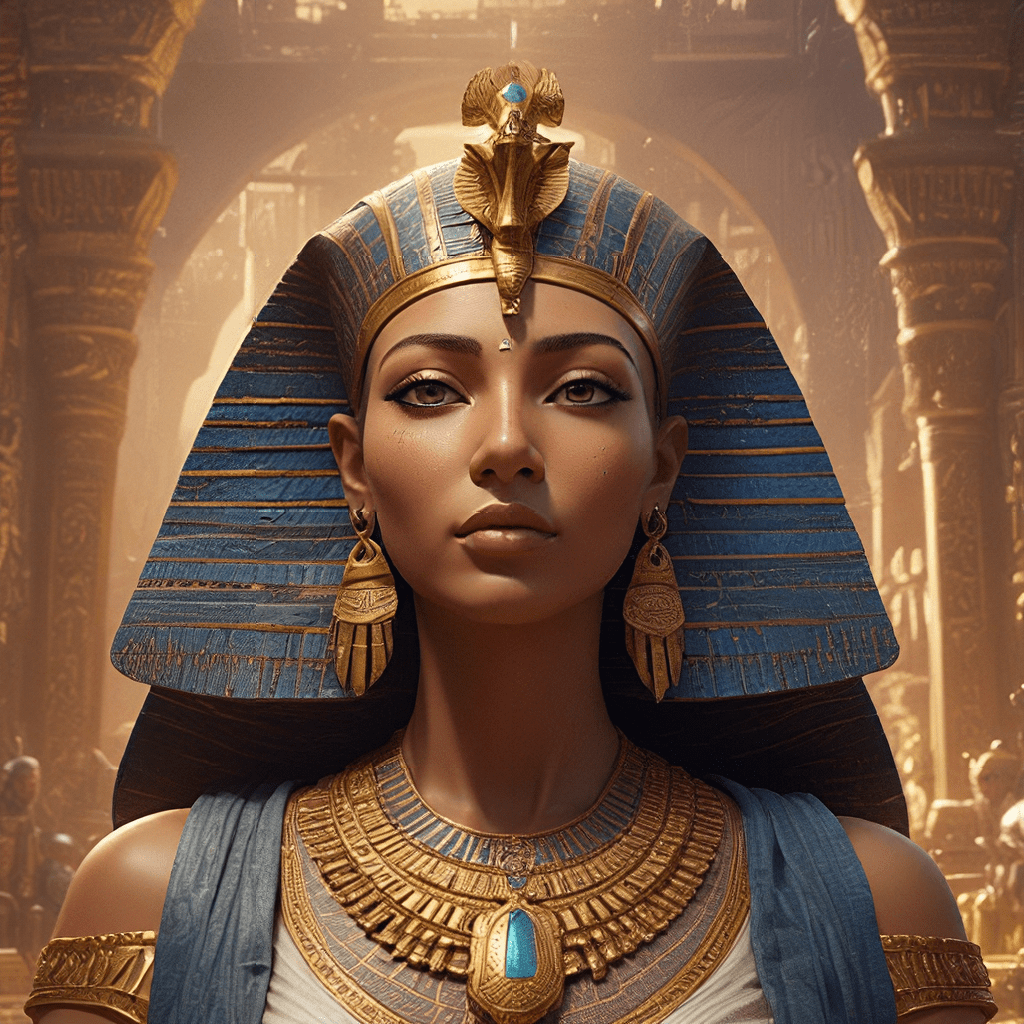I. Introduction: A Land of Myth and Magic
Ancient Egyptian mythology is a rich tapestry of stories, beliefs, and rituals that offer a window into the mind of a civilization obsessed with the cosmos, the afterlife, and the power of divine forces. The Nile River, the lifeblood of Egypt, played a pivotal role in their mythology, symbolizing both creation and renewal. Egyptian deities were not confined to the borders of their land; their influence spread far and wide, reaching ancient Greece, Rome, and beyond. From the grand pyramids to the intricate hieroglyphs, the echoes of these powerful gods and goddesses can still be felt today.
II. The Ennead: The Nine Great Gods
The Ennead, meaning “the nine,” represented the core of the Egyptian pantheon, forming a powerful family structure that governed the cosmos. This divine family was often depicted as originating from the primordial waters, symbolizing the creation of the world. At the heart of this family is the sun god Ra, who embodies creation, light, and life itself. Ra, in his various forms, was believed to be the supreme ruler, ensuring the daily cycle of the sun and the continuation of life on earth. He was often depicted as a falcon-headed god, representing his connection to the sky.
The Ennead’s structure reflects the cosmic order: Atum, the self-created god, represents the beginning of all things. Shu and Tefnut, the gods of air and moisture, represent the emergence of the world from the primordial waters. Geb and Nut, the gods of earth and sky, symbolize the creation of the physical world. Finally, Osiris, Isis, and Seth, the gods of the underworld, fertility, and chaos, represent the eternal cycle of life, death, and rebirth.
III. The Sun God: Ra and His Many Forms
Ra, the sun god, occupies a central position in Egyptian mythology, representing the life-giving power of the sun and the order of the cosmos. He is often depicted as a falcon-headed god, symbolizing his connection to the sky. Ra’s journey across the sky each day was a cosmic event, ensuring the continuation of life and the cycle of day and night. His divine barque, the solar boat, carried him across the heavens, fighting off demons and ensuring the triumph of light over darkness.
Ra’s power extended beyond the physical sun; he embodied the very essence of creation, representing the fundamental principles of life, light, and energy. He was often considered the creator god, bringing order from chaos and giving birth to the world. His many forms, such as Atum, Khepri, and Re-Harakhti, each represented different aspects of his power and influence. Atum, representing the self-created god, symbolizes the beginning of creation. Khepri, the scarab beetle god, embodies the power of renewal and rebirth. Finally, Re-Harakhti, the sun god at its zenith, represents the full power and glory of the sun.
IV. Osiris, Isis, and Seth: The Divine Family Drama
The story of Osiris, Isis, and Seth is a classic tale of betrayal, resurrection, and the eternal cycle of life and death. Osiris, the god of the underworld and the embodiment of fertility and life, was murdered by his jealous brother, Seth, who coveted his throne. However, Isis, Osiris’s devoted wife, found his body and used her magic to revive him, ensuring the continuation of life and the cycle of rebirth. This act of resurrection was vital to the Egyptian belief in the afterlife, promising that even in death, life would continue.
The conflict between Osiris and Seth, representing order and chaos, played a crucial role in shaping Egyptian beliefs. Osiris’s death and resurrection symbolized the eternal cycle of life, death, and rebirth, which was central to the Egyptian worldview. Seth, as a chaotic force, represented the dangers lurking in the world, reminding people that even the most powerful beings were capable of experiencing loss and suffering.
V. Horus, the Avenger and King of the Two Lands
Horus, the son of Osiris and Isis, embodies the power of the king and the struggle between order and chaos. After his father’s murder, he became the rightful heir to the throne, but he faced a formidable challenge: Seth, the god responsible for Osiris’s death. The conflict between Horus and Seth represented the struggle between order and chaos, justice and injustice, light and darkness. Horus’s victory over Seth became a symbolic representation of the divine right of kings and ensured the stability of the kingdom.
Horus’s role as the king of Upper and Lower Egypt made him a powerful figure, representing the unified kingdom and the authority of the pharaoh. His image was often used in royal iconography, symbolizing the divine power and legitimacy of the pharaoh. The Egyptians believed that the pharaoh was a living embodiment of Horus, ensuring the continuation of order and stability in the kingdom.
VI. The Goddesses of Power and Mystery
The Egyptian pantheon was not limited to male deities. Powerful goddesses played significant roles in the lives of the ancient Egyptians, embodying various aspects of nature, creation, and the afterlife. Bastet, the cat goddess, represented protection, motherhood, and the home. Hathor, the goddess of love, beauty, and music, symbolized the feminine power and the joy of life. Sekhmet, the lion goddess, embodied fierce power and the wrath of the gods.
The most famous of these goddesses was Isis, the wife of Osiris and the mother of Horus. Her role as a protector, healer, and magician, made her a beloved figure throughout Egypt. She embodied the power of female love, devotion, and resilience. Her influence extended far beyond ancient Egypt, with her stories finding their way into the mythology and folklore of other cultures.




